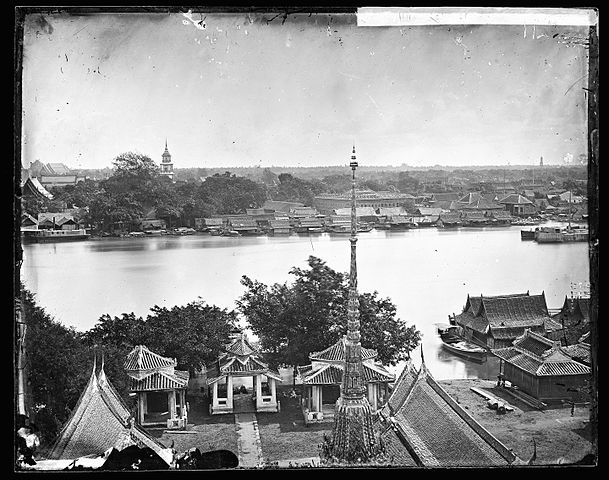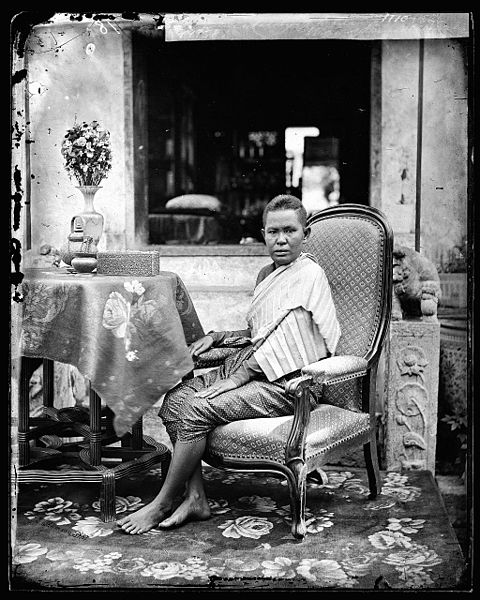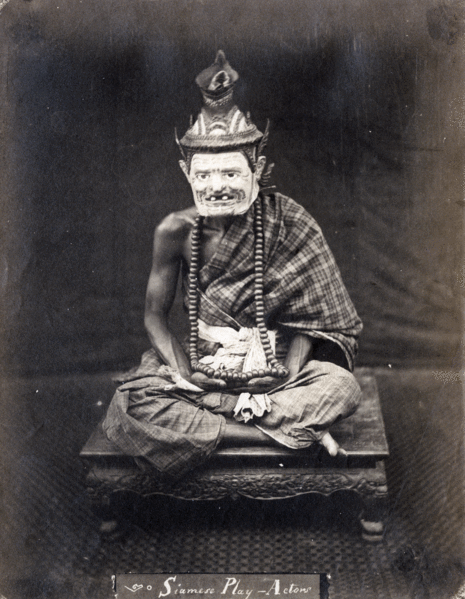
A book newly acquired by the Thammasat University Libraries, Photography and the Art of Chance, explores how easy it is to ruin a photograph by clicking at the wrong time or from the wrong angle. Some great photos can be taken almost by accident. Its author, Robin Kelsey, a professor of photography at Harvard University, argues that this uncertainty means that photography can capture what is risky and unpredictable about modern life. Last year Professor Kelsey told Harvard Magazine:
Most everyone who has used a camera understands that chance plays a big role in photography. An experienced photographer can make a great image, but so can a toddler wandering around and shooting haphazardly… taking a photograph is as much a matter of hoping as of trying. What does it mean that the modern world has given so much of its art and visual culture over to a technology prone to chance? Have we been honest with ourselves about the implications of this investment? These are questions that fascinate me. Let me offer an example. In 1945, Joe Rosenthal made one of the most famous photographs of all time: his image of the flag-raising on Iwo Jima. When Rosenthal packed up the 18 exposures he made that day of the flag raising and put them on the mail plane to Guam, he had no idea that he had produced such an extraordinary image. In fact, when he arrived days later on Guam and learned that one of the 18 photographs he had taken that day had become famous, he had no idea which image it was. The fact that the image is treated as a “work” — garnering Rosenthal a Pulitzer Prize and making him famous — suggests that we have not been terribly honest with ourselves about the role of chance in photography. Would you give someone a Pulitzer Prize for a great poker hand? The issue is not how much credit Rosenthal deserves — he was by all accounts a very brave, decent, and competent man. The issue is rather that we want photographs to bear the meaning of traditional pictures even though the process that goes into them is radically different. In other words, we want from photography all the ease of automation and all the meaning of authorship, and it’s by no means clear that you can have both.
Today, with cell phones, Instagram, and Snapchat, there are more photographers than ever, and it is easy to edit and alter images after they are taken. Instead of being mementos as they were in earlier years, photographs in the era of selfies are more of a sign telling everyone about things that were seen or places visited. Years ago people would take time to admire a photograph, but now, it only takes an instant to click “like” and move on to the next image.

Thailand and Photography
As all Thais know, His Majesty King Bhumibol Adulyadej has set an example as a highly creative person fascinated with the art and practice of photography. His daughter, Her Royal Highness Princess Maha Chakri Sirindhorn, has been inspired to follow his example, as The Nation reported in 2015. That year, HRH Princess Sirindhorn went to Beijing to open a solo photography exhibition at the Capital Museum. Displayed were over 70 images taken by the Princess during trips to China as well as pictures taken in Thailand. The year before, The Nation noted that HRH Princess Sirindhorn also used photography as a way of exploring and appreciating nature. The Bangkok Art and Culture Centre featured “Clairvoyance,” an exhibit including microscopic views of basil and lavender, chilli, silk thread and abalone shells:
In what’s become a tradition, the Princess has mounted photo exhibitions each year since 2007. We look forward to snapshots from her official travels at home and abroad and her portraits of the royal family. This year’s exhibition, though – with 158 images presented in informative installations – demonstrates her abiding interest in science and technology. “This year there are photos taken through a telescope,” the Princess writes in the preface of the accompanying book, “of celestial bodies such as star clusters and nebulae so far away they cannot be seen by the naked eye. Space has always fascinated mankind. Today’s technologies enable us to delve further into space than ever before.” The Princess says she’s “always been a stargazer” though she never trained in astronomy. “But I have been fortunate to have used advanced telescopes recently available to Thailand. Seeing the vast unknown space impresses upon me how insignificant we humans are. Our knowledge, what we know now, is so minuscule compared to what we do not know in the infinity of space.”

The exhibit’s catalogue is in the collection of the TU Libraries. Its title was inspired by the traditional Thai epic Inao, as dramatized by King Rama II (Phra Phutthaloetla Naphalai). In this version, Prince Joraka states: “My two hands held high in reverence for all gods big and small, for all those with clairvoyance, do not side with the villain!” Researching herbs, the Princess studied plant molecular structure with the Scanning Electron Microscope at the National Nanotechnology Centre. Nanotechnology means manipulating matter on an atomic, molecular, and supramolecular scale. The Princess was observing rather than manipulating matter, and finding artistic interest in what she saw:
I could see how a leaf can secrete its aroma oil from tiny pouches (nanoencapsulation). Certain butterflies have no pigment in their wings, and yet we see colours because of the reflection of light. There is also a photo from a drone that allows us to see from high altitude. Photos produced by this drone are used in the development of terrain.
HRH Princess Sirindhorn also directed a drone to fly above her residence, Sra Pathum Palace, by remote control, to take aerial shots also on display at the Bangkok Art and Culture Centre. Apart from characterful images of Italy, India, and Malta, a portrait of the celebrated National Artist Thawan Duchanee (1939–2014) was among other highlights of the show. These Royal precedents may have encouraged an ardent interest in photography in the Kingdom. Last year the innovative PhotoBangkok 2015 festival was held. As its website declares:
PhotoBangkok is an international photography festival consists of wide range photography programs from historical, experimental to contemporary exhibitions and interactive public installation with large scale slideshow projection. The festival is bringing together artists, institutions, galleries and curators to showcase photography through collaborative projects, involving 19 gallery partners around Bangkok. Diverse educational programs are provided by experienced professionals through portfolio review, photo editing workshops and photo related talks throughout the festival period.
Works by over 60 photographers Southeast Asia were displayed, as directed by the Thai photographer Piyatat Hemmatat. In an interview posted on his website, Khun Piyatat, who also runs the alternative art space RMA Institute on Sukhumvit Soi 22, explained his own approach to artwork:
I am spiritual in the sense that I worship nature, and nature to me represents the truth, and photography is my instinctive reaction towards everything that is happening around me. My aspiration is to push the visual boundary and dialogue within photography — photography is my natural learning tool to obtain knowledge. My main interest is in creating visual depictions. I translate, transcribe, and combine ideas into photographic projects. Each of my projects are like chapters in a book. Together, they’ll provide a personal view on existence. Photography is a universal language which hasn’t been dealt with or applied to mythologies and this is where I come in. I managed to find a way. By applying classic ideas with modern visual communication tool, I can create a photo-mythos in a contemporary context for our time.
The goal of PhotoBangkok 2015 was to develop standards and interactions between the photographic community and creative industries in the Kingdom. Among other events was a retrospective show, “Rediscovering Forgotten Thai Masters of Photography,” curated by the photographer Manit Sriwanichpoom, celebrating the work of such talents as Buddhadasa Bhikkhu, ML Toy Chumsai, Liang Ewe, Saengjun Limlohakul, Rong Wongsawan, S. H. Lim (Vivat Pitayaviriyakul), and Pornsak Sakdaenprai.

(All images courtesy of Wikimedia Commons).
